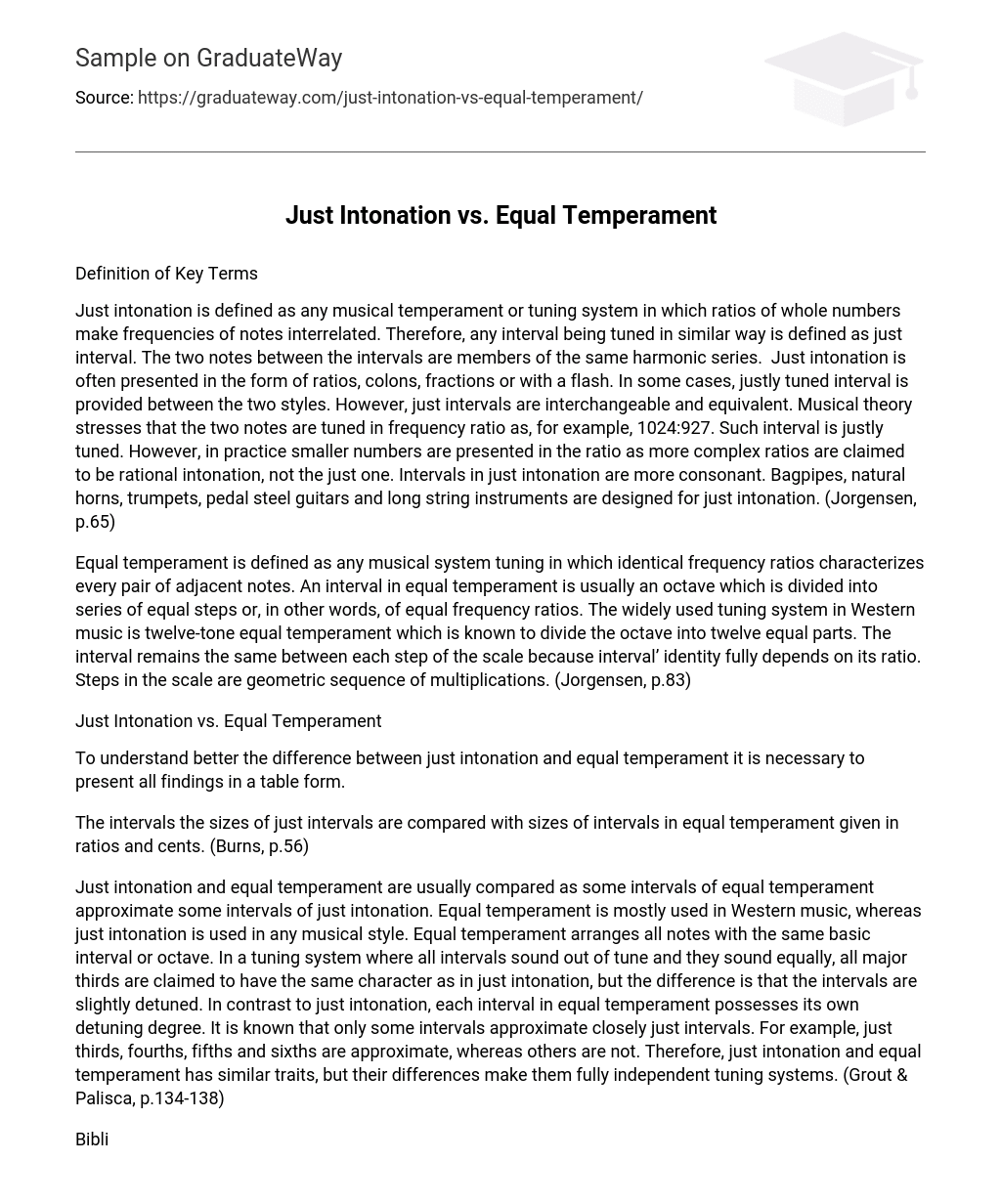Definition of Key Terms
Just intonation is defined as any musical temperament or tuning system in which ratios of whole numbers make frequencies of notes interrelated. Therefore, any interval being tuned in similar way is defined as just interval. The two notes between the intervals are members of the same harmonic series. Just intonation is often presented in the form of ratios, colons, fractions or with a flash. In some cases, justly tuned interval is provided between the two styles. However, just intervals are interchangeable and equivalent. Musical theory stresses that the two notes are tuned in frequency ratio as, for example, 1024:927. Such interval is justly tuned. However, in practice smaller numbers are presented in the ratio as more complex ratios are claimed to be rational intonation, not the just one. Intervals in just intonation are more consonant. Bagpipes, natural horns, trumpets, pedal steel guitars and long string instruments are designed for just intonation. (Jorgensen, p.65)
Equal temperament is defined as any musical system tuning in which identical frequency ratios characterizes every pair of adjacent notes. An interval in equal temperament is usually an octave which is divided into series of equal steps or, in other words, of equal frequency ratios. The widely used tuning system in Western music is twelve-tone equal temperament which is known to divide the octave into twelve equal parts. The interval remains the same between each step of the scale because interval’ identity fully depends on its ratio. Steps in the scale are geometric sequence of multiplications. (Jorgensen, p.83)
Just Intonation vs. Equal Temperament
To understand better the difference between just intonation and equal temperament it is necessary to present all findings in a table form.
The intervals the sizes of just intervals are compared with sizes of intervals in equal temperament given in ratios and cents. (Burns, p.56)
Just intonation and equal temperament are usually compared as some intervals of equal temperament approximate some intervals of just intonation. Equal temperament is mostly used in Western music, whereas just intonation is used in any musical style. Equal temperament arranges all notes with the same basic interval or octave. In a tuning system where all intervals sound out of tune and they sound equally, all major thirds are claimed to have the same character as in just intonation, but the difference is that the intervals are slightly detuned. In contrast to just intonation, each interval in equal temperament possesses its own detuning degree. It is known that only some intervals approximate closely just intervals. For example, just thirds, fourths, fifths and sixths are approximate, whereas others are not. Therefore, just intonation and equal temperament has similar traits, but their differences make them fully independent tuning systems. (Grout & Palisca, p.134-138)
Bibliography
- Burns, E. M. Intervals, Scales, and Tuning, in The Psychology of Music. San Diego, Academic Press, 1999.
- Grout, D. J. & Palisca, Cl. A History of Western Music. New York, W.W. Norton & Company Inc., 2000.
- Jorgensen, Owen. Tuning. USA, Michigan State University Press, 1991.





